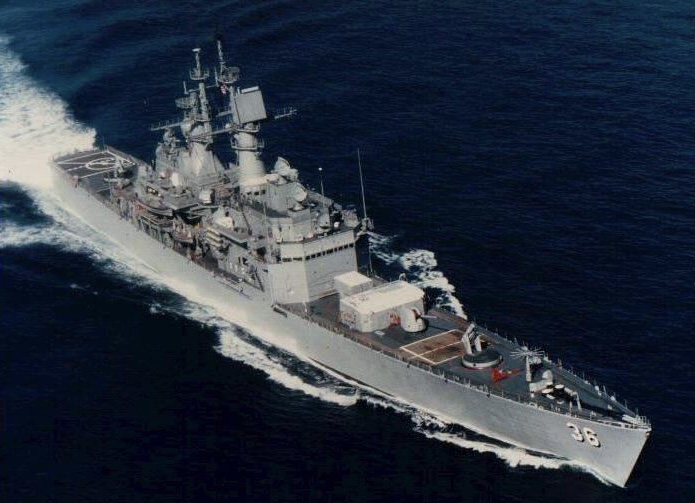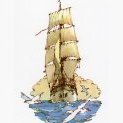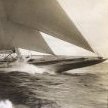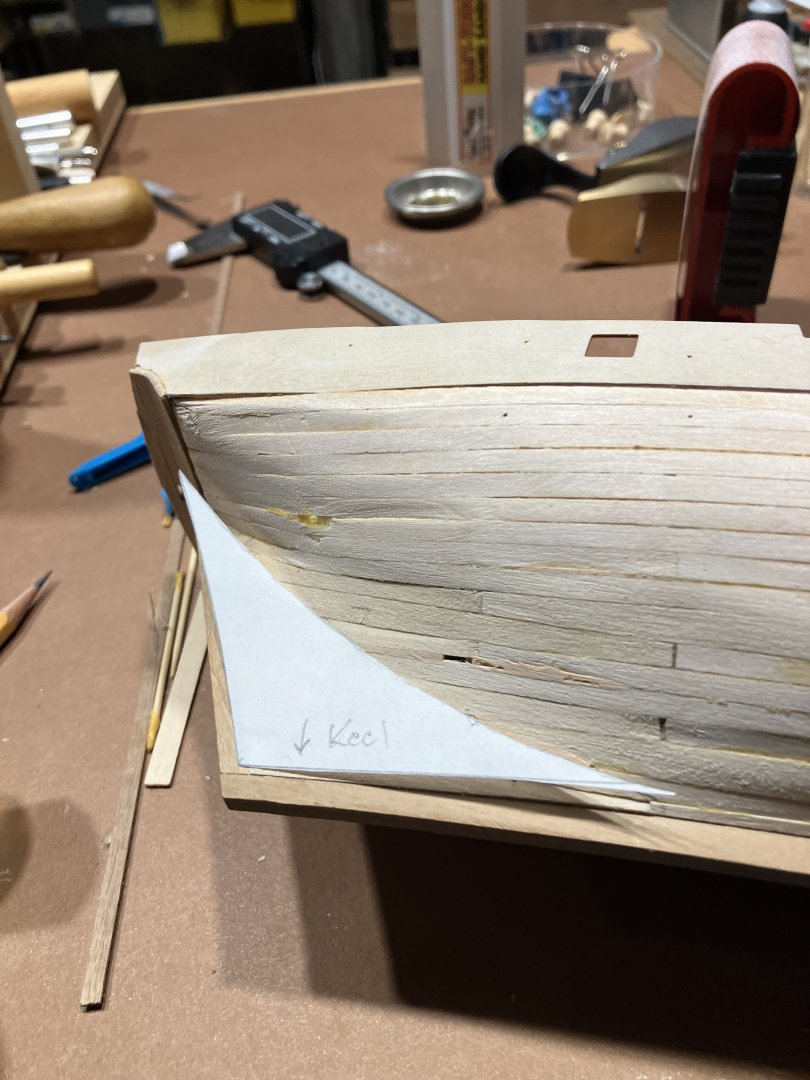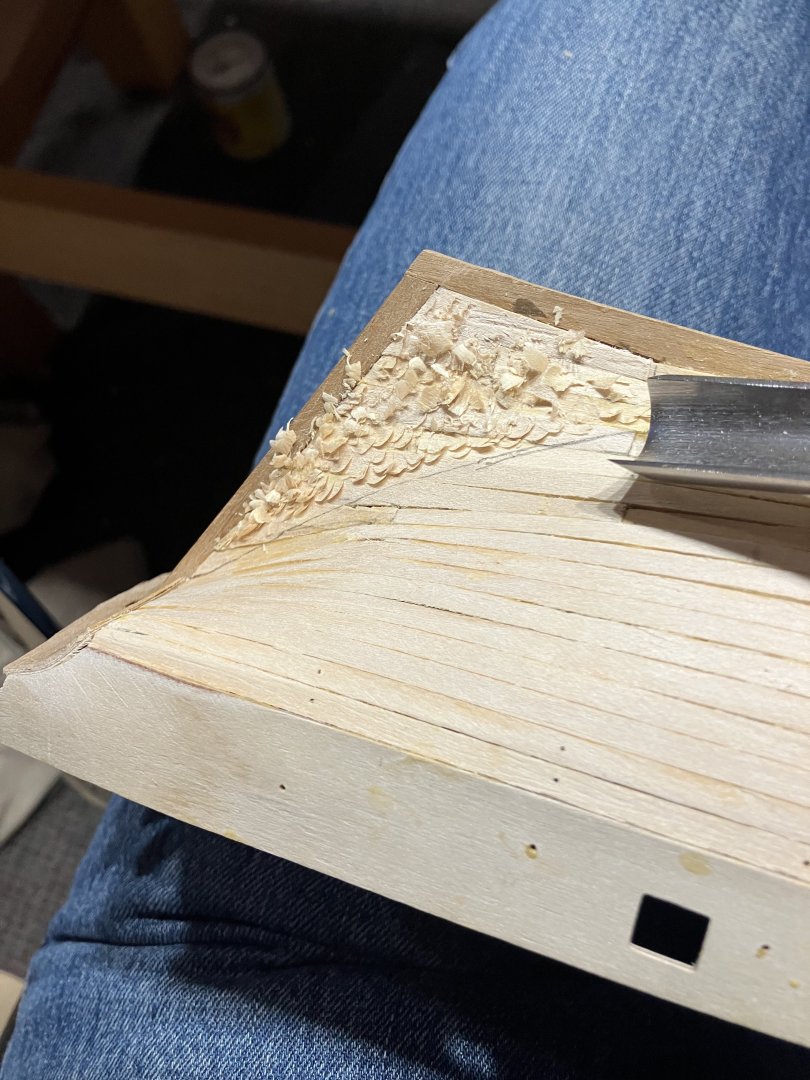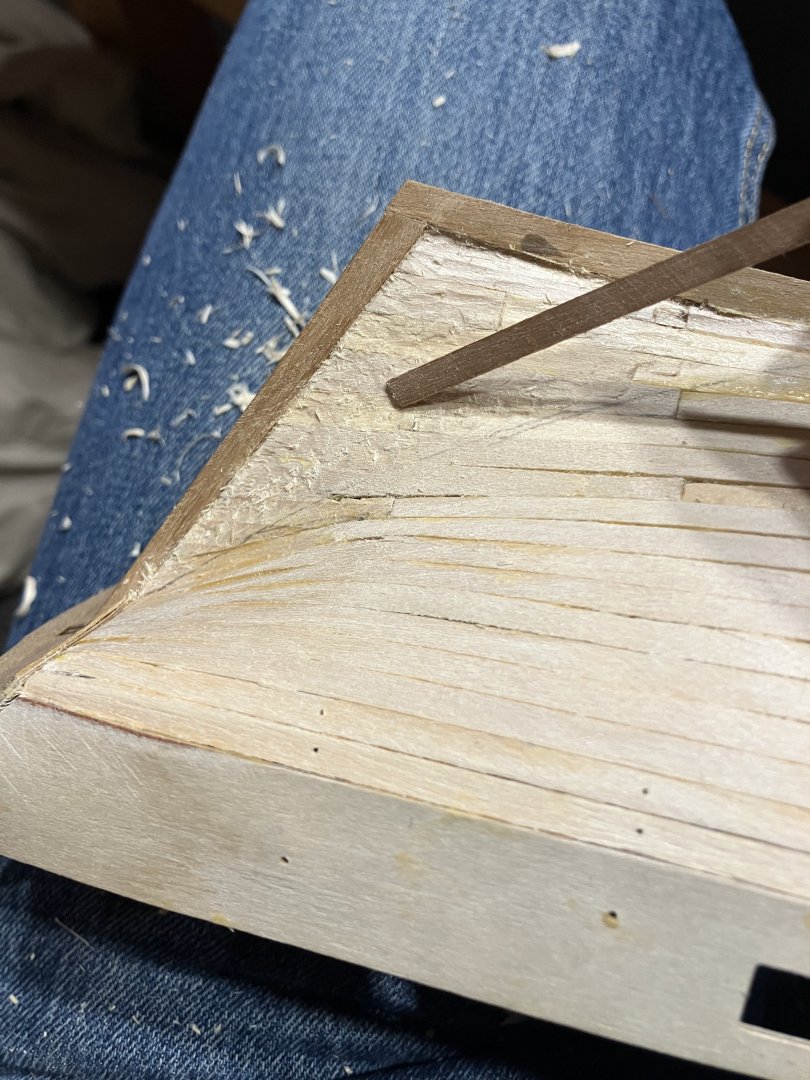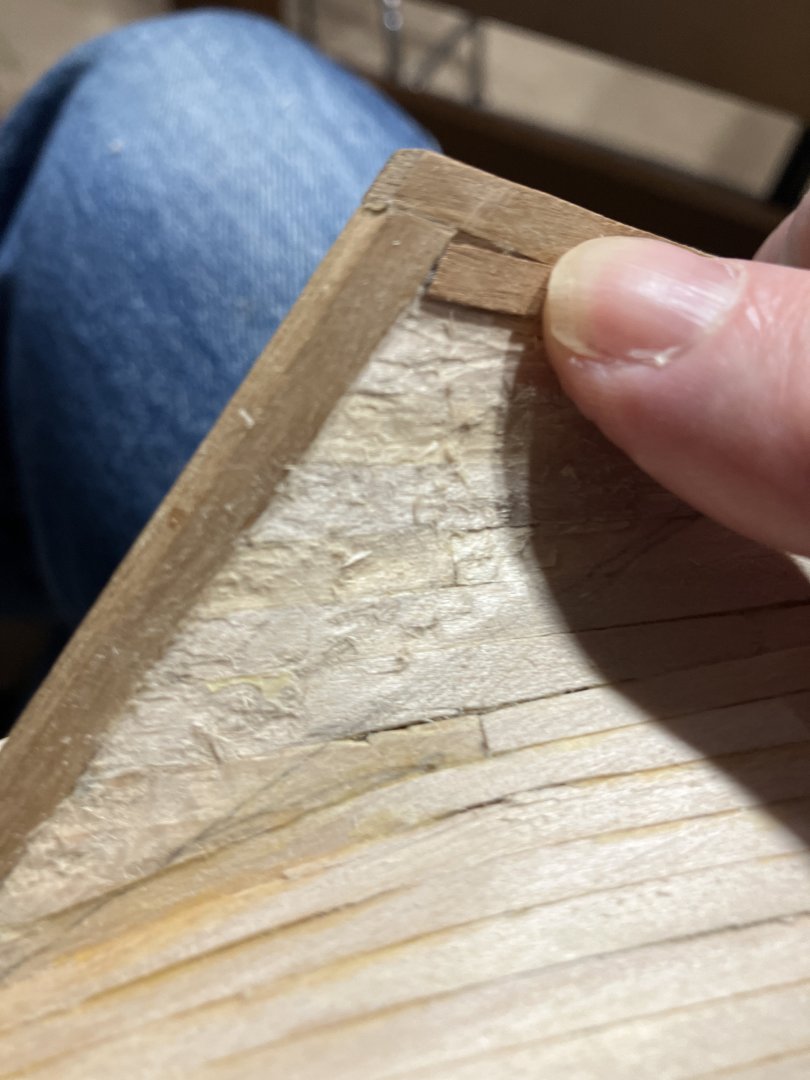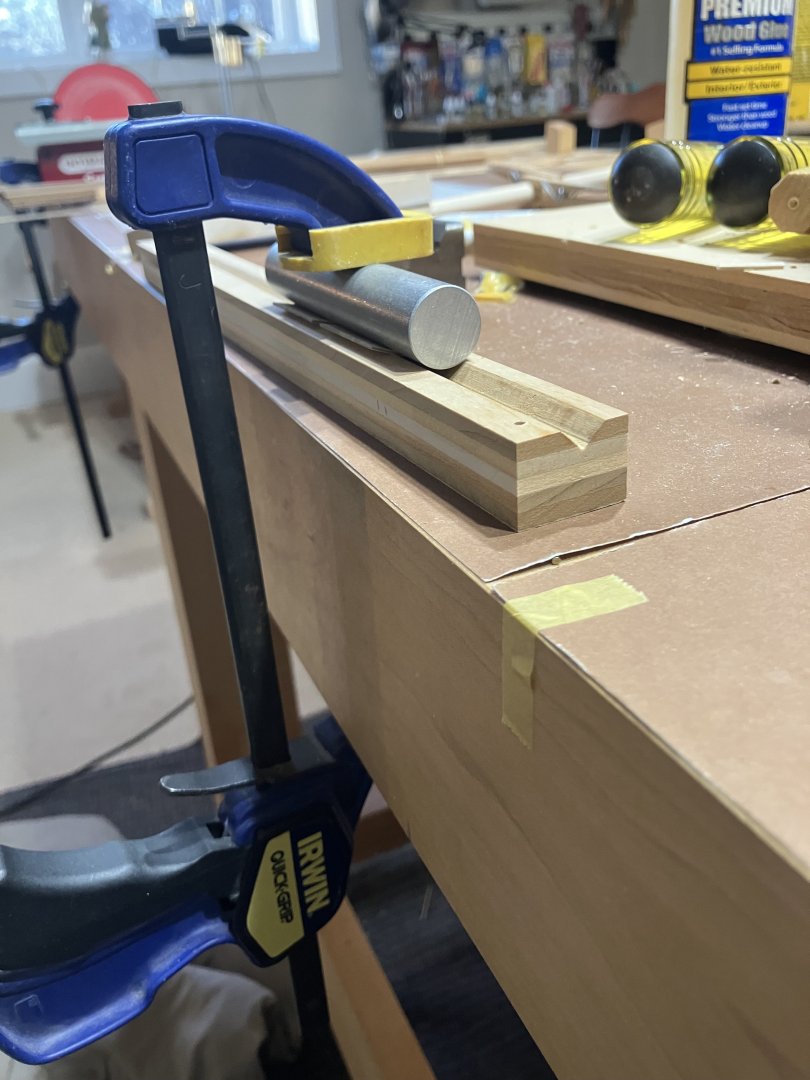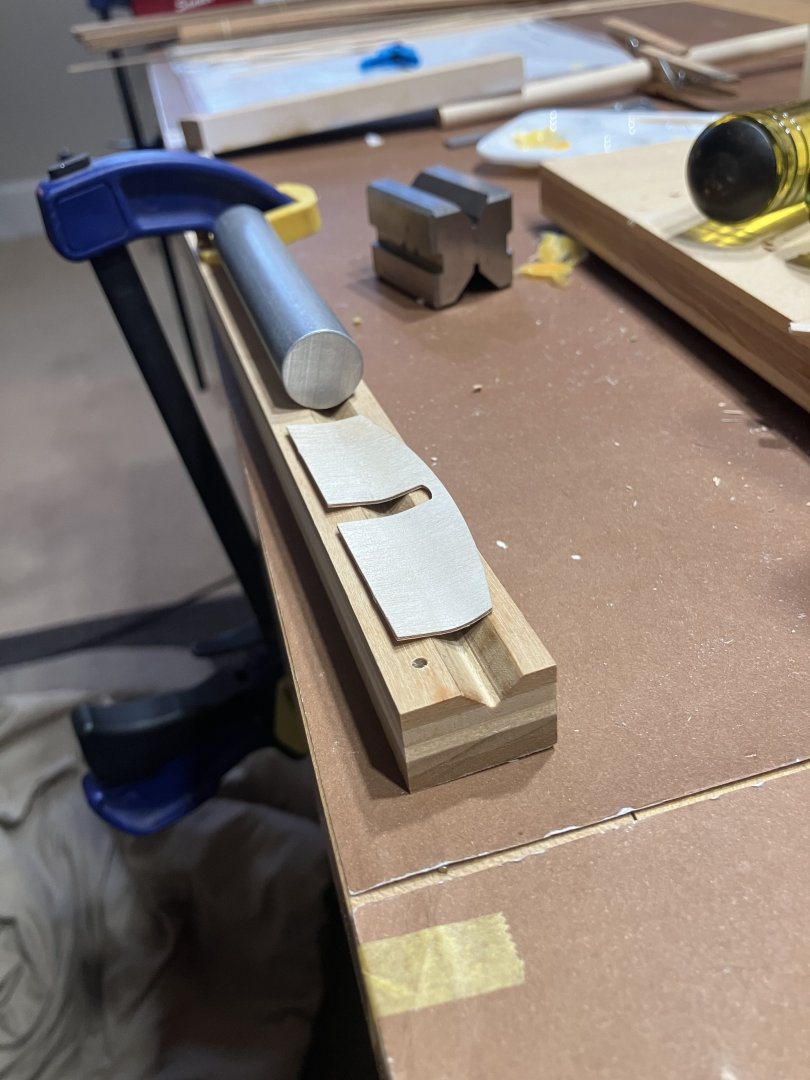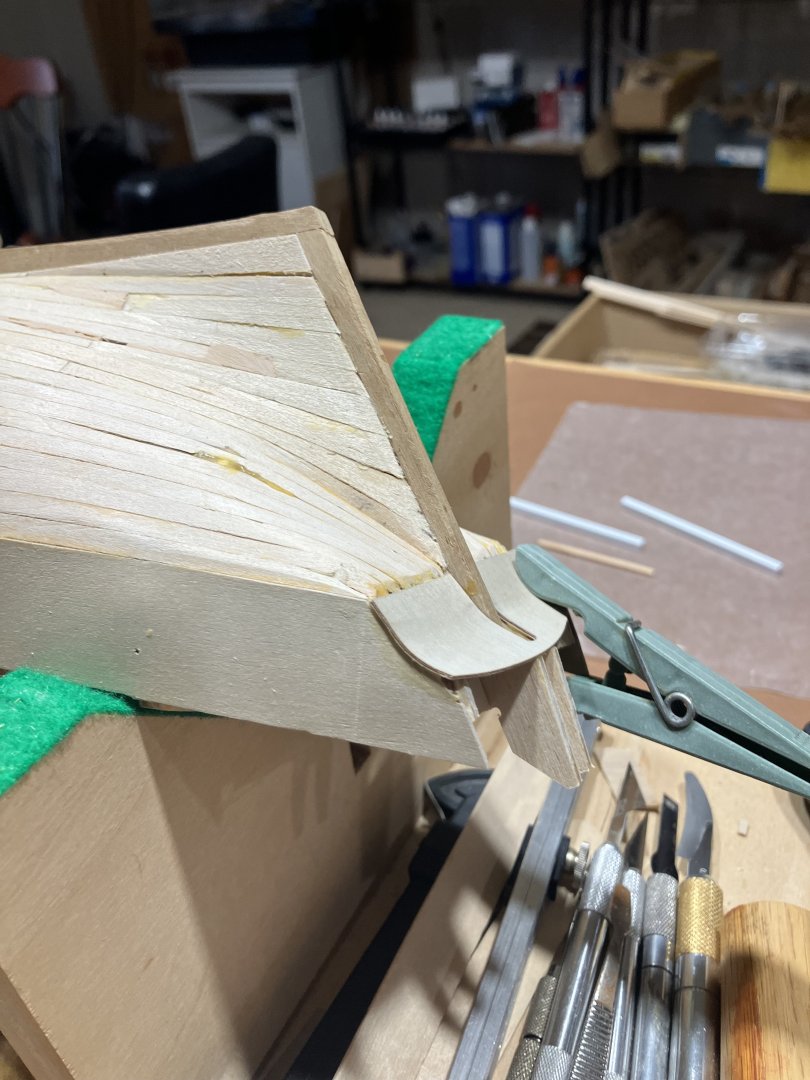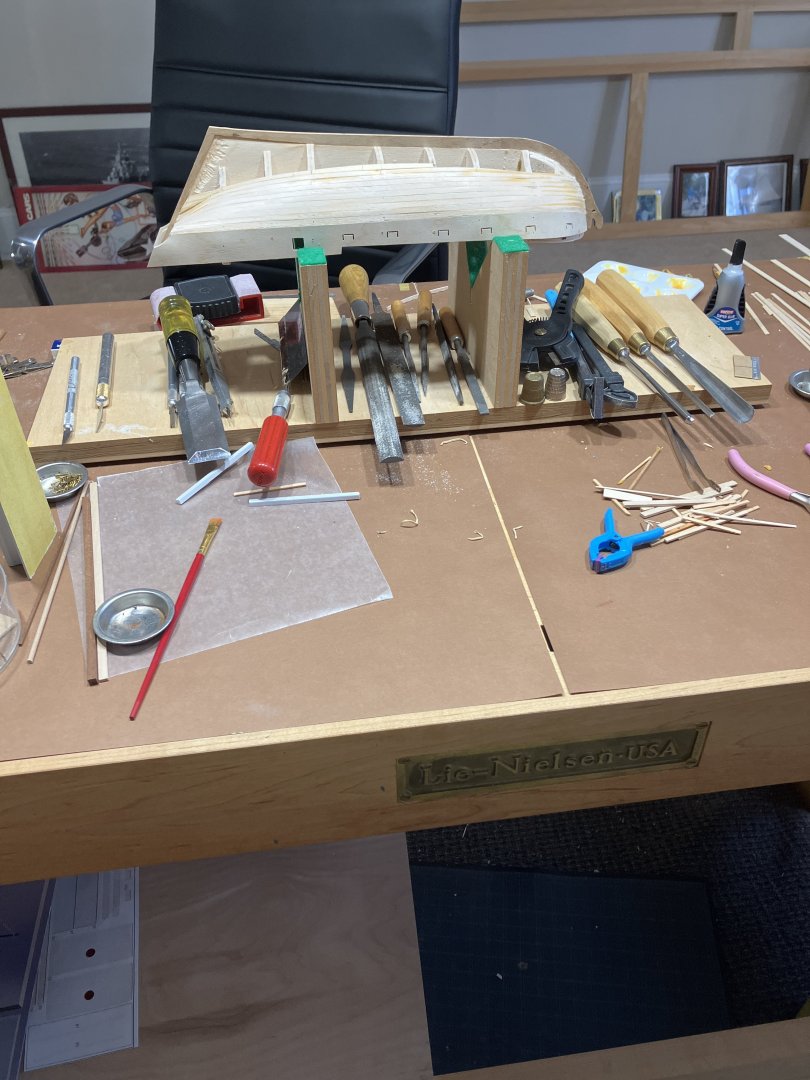-
Posts
744 -
Joined
-
Last visited
-
HMS Badger: Cutting Bearding Area in First Planking
First made a template from the plan with Velum.
Tools for the Work
Large and Small Gouges, Round and Square Files, Pattern File - it has cutting edges and perpendicular safe edges.
Large gouge used to make chips.
And smaller chips back towards the bearding line.
Hardwood plank makes a great scraping tool.
Pattern file to work along the keel and stern post.
The plank edge should fit flush along the keel and stern post.
-
HMS Badger: Counter Forming and Installation
Usually I’d soak and form with my fingers.
This time realized I needed some help with some sort of jig. Looked around the shop and found a PE rolling bar, and a jig used to hold dowels when drilling holes.
Piece in the Jig and Clamping
Done
Installed on the Ship

